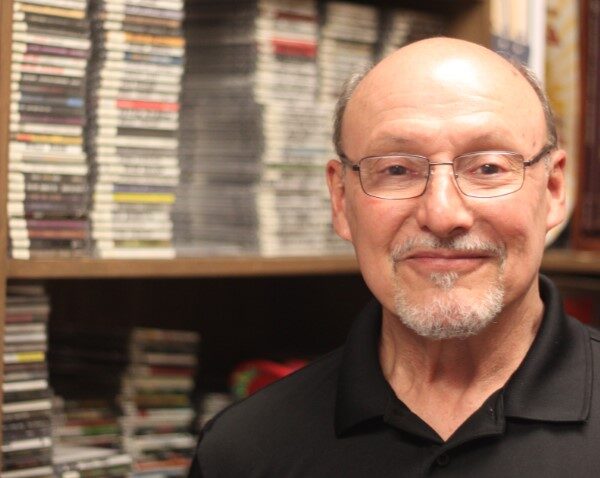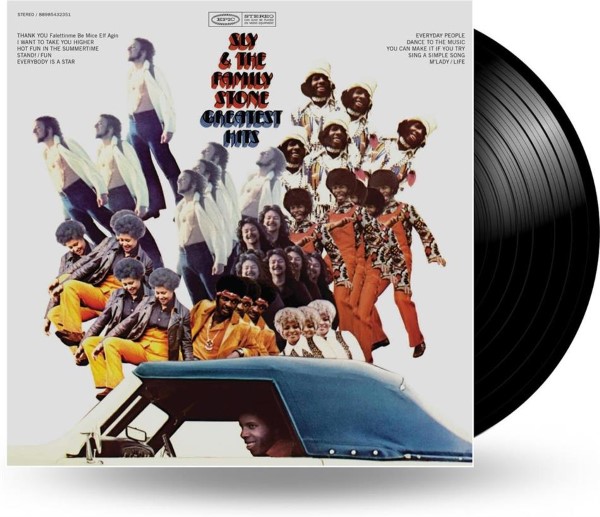
Ask any serious music lover who grew up during the golden age of the vinyl album—roughly 1965 to 1979—and they’ll testify to popular music’s unprecedented power among youth culture. The very concept of a youth culture, in fact, didn’t even exist until after the mid-1950s emergence of rock ’n’ roll, a phenomenon that would ultimately transform the mediums of radio and recorded music. It was at the outset of vinyl’s golden age, around the mid-’60s apex of Beatlemania, when a self-described skinny, suburban Rutherford County kid would have an early musical epiphany while getting an unexpected shot of rhythm & blues over the airwaves.
“Around [the mid-1960s] I recall locating a live New Year’s Eve concert broadcast from Chicago that I heard on my parents’ coffin-sized radio/record player,” recalls WMOT’s Greg Lee. “It was Little Richard with a terrific horn band. I’d never heard anything like it and began to search out all these R&B, rock, pop and soul artists and their recordings.”
Lee, a decades-long fixture of the local FM station at 89.5 whose resonant voice and jazz expertise are familiar to longtime Murfreesboro listeners, is equally passionate and knowledgeable about soul, funk and the numerous hybrids drawn from the rhythm & blues bloodline. His personal coming-of-age experiences with such music form the foundation of his weekly radio show, Bel-Aire Drive.
When WMOT switched to its Roots/Americana format in 2017, Lee’s jazz programming moved to HD and streaming formats (and new, alternate regional radio frequencies). Lee’s Bel-Aire Drive, which airs on Roots Radio 89.5 (and live-streams via wmot.org) every Friday night at 8 p.m., came about as a result of that move; indeed, a move of a different kind—his family’s relocation from the Rutherford County suburbs to more culturally diverse Tullahoma on the cusp of the 1970s—inspired Lee’s concept for his weekly journey through the music that indelibly marked his teen years and beyond.

“Back then Tullahoma was a different place than I’d experienced, due in large part to the nearby Air Force base and the aerospace tech industry and the diverse group of peoples there because of it,” Lee tells the Pulse. His extended urban-style neighborhood included folks “from every cultural, economic and spiritual corner one would expect to find in the South of the late ’60s and early ’70s.” Residing in a neighborhood where races and cultures overlapped, Lee soon embarked on a musical as well as social discovery far more immersive than the one sparked a few years earlier by rock ’n’ roll pioneer Little Richard (who, coincidentally, would move to Tullahoma himself in his final years).
“Seemingly there were a lot more ways to divide people at that time than ways to bring people together—assassinations, civil rights strife, Vietnam—and the youth of America were the primary ones forcing the issues,” Lee explains. “Along with faith, our music was a panacea for the tension of those times. It crossed age and societal lines, economic conditions and the like. It was something with which we could all find common ground.
“We’d be shooting baskets in somebody’s backyard and they’d have their stereo system out there, and a big stack of records on there. Or we’d be in somebody’s living room playing cards, or outside working on cars. Music was everywhere at the time,” says Lee, affirming that the social activity of sharing record collections created a natural bridge between people of various colors and creeds. “I grew up in that transition between segregation and desegregation,” Lee adds. “The music helped sand down the hard edges that existed between some people.”
As Bel-Aire Drive demonstrates every week, there was a musical embarrassment of riches flowing in the mid-to-late ’60s and beyond. Styles criss-crossed in a respectful exchange; while The Rolling Stones displayed their admiration for American blues artists, soul man Otis Redding put his own spin on the Stones’ “(I Can’t Get No) Satisfaction.” Notably, Sly and the Family Stone’s unprecedented multi-racial/mixed-gender lineup and positively themed hybrid of pop, soul and funk was an early sign of the dam about to burst.

“Sly’s music spoke to a lot of different people, and it definitely spoke to me and the folks in my circles back at that time,” says Lee, who suggests Stone was likely the first to successfully cross racial and stylistic boundaries previously kept more distinct.
Musical cross-fertilization was increasingly occurring among ethnic and stylistic lines, resulting in an exciting period for both commercial pop and the harder-edged, headier experimentation heard on full-length albums. Lee’s two-hour Bel-Aire Drive covers all that ground and more, mixing up blues, funk, soul, rock, and fusion spanning the ’70s as well as tracks from earlier in the ’60s, offering context for the flood of changes soon to culminate in waves of cultural transformation.
The friendly, free exchange of music Lee enjoyed while living on Bel-Aire Drive, however exhilarating it may have been, wasn’t the full extent of the experience. Popular music was addressing the fast-cascading dominoes of a country in crisis, providing a forum as well as an anchor for youths grappling with issues of race, economics, the environment and more. Lee reckons that having a diverse group of companions who were all processing cultural change through music made it possible “to soak all of that up” and find vital points of connectivity.

“To me that’s what that whole Bel-Aire Drive experience was about, because we had a large circle of different friends,” Lee says. “The music was one of the biggest things that helped young people sort it all out for themselves and among themselves. That was a unique period of time for many reasons, but the music was the balm that I like to capture on the radio show.”
That balm, as it was five decades ago, is a welcome one today.












